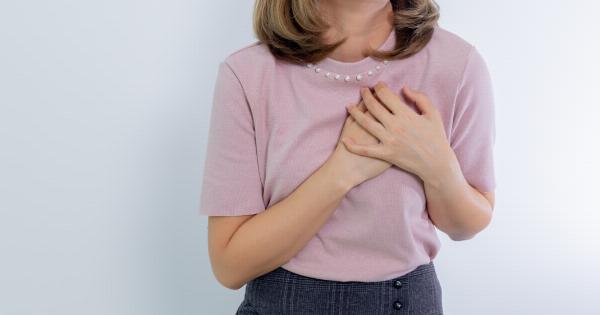A heart attack occurs when the flow of blood to the heart muscle is blocked, typically resulting from a blood clot. It is essential to recognize the symptoms of a heart attack to ensure swift emergency response.
By identifying these signs early on, you can help improve the chances of survival and minimize potential damage to the heart.
Common Symptoms
1. Chest Pain or Discomfort:.
One of the most typical symptoms of a heart attack is feeling pressure, tightness, or pain in the chest. This discomfort may last for a few minutes or subside and return.
2. Upper Body Pain:.
Discomfort or pain may spread beyond the chest to the shoulders, arms (particularly the left arm), back, neck, jaw, or even the stomach area. It may feel like a dull ache or a significant pressure.
3. Shortness of Breath:.
Feeling out of breath or having difficulty catching your breath can also be indicative of a heart attack. Shortness of breath may accompany chest pain or occur without it and could be more prominent in women than in men.
4. Nausea and Dizziness:.
Some individuals experience feelings of nausea, vomiting, lightheadedness, or sudden dizziness during a heart attack. These symptoms are more common among women.
5. Cold Sweats:.
Experiencing cold sweats, clammy skin, or perspiration that feels unusual or unexplained can be a sign of a heart attack. This symptom is not exclusive to physical activity or fever.
What to Do in Case of a Heart Attack
During a heart attack, every minute counts. Prompt emergency response can save lives and limit potential damage to the heart. If you or someone around you experiences symptoms suggestive of a heart attack, follow these steps:.
1. Call for Emergency Medical Assistance
Immediately call your local emergency number or an ambulance service. Describe the symptoms and mention that you suspect a heart attack. If possible, ask for an ambulance equipped with cardiac care facilities.
2. Chew and Swallow Aspirin
If you have access to aspirin and are not allergic to it, chew and swallow a tablet (usually 325 mg or four low-dose aspirins). Aspirin helps prevent blood clotting and can minimize the damage caused by a heart attack.
3. Rest and Seek Comfortable Position
Make the person experiencing the heart attack sit down and rest in a comfortable position. Loosen any tight clothing and reassure them while waiting for medical help to arrive.
4. Perform CPR if Necessary
If the individual experiencing the heart attack becomes unresponsive and stops breathing, it may be necessary to perform cardiopulmonary resuscitation (CPR). If you are trained in CPR, begin the procedure immediately until professional help arrives.
5. Use an Automated External Defibrillator (AED)
If an AED is available nearby and the person becomes unconscious, follow the instructions provided with the device and use it as directed. AEDs can analyze heart rhythms and deliver electric shocks if necessary to restore a normal heartbeat.
Reducing the Risk of a Heart Attack
While heart attacks can occur suddenly and unexpectedly, certain lifestyle changes can help reduce your risk:.
1. Maintain a Healthy Diet
Eat a balanced diet rich in fruits, vegetables, whole grains, lean proteins, and low-fat dairy products. Minimize the consumption of saturated fats, trans fats, salt, and added sugars.
2. Engage in Regular Exercise
Aim for at least 150 minutes of moderate-intensity aerobic exercise or 75 minutes of vigorous-intensity exercise per week. Incorporate strength training exercises at least twice a week.
3. Avoid Tobacco and Limit Alcohol
Avoid smoking or using tobacco products altogether. If you consume alcohol, do so in moderation (up to one drink per day for women and up to two drinks per day for men).
4. Manage Stress Levels
Practice stress management techniques such as deep breathing exercises, meditation, yoga, or engaging in hobbies to help reduce stress levels.
5. Control High Blood Pressure, Cholesterol, and Diabetes
Work with your healthcare provider to monitor and manage your blood pressure, cholesterol levels, and diabetes effectively. Follow the prescribed treatment plan and take any necessary medications as directed.




















